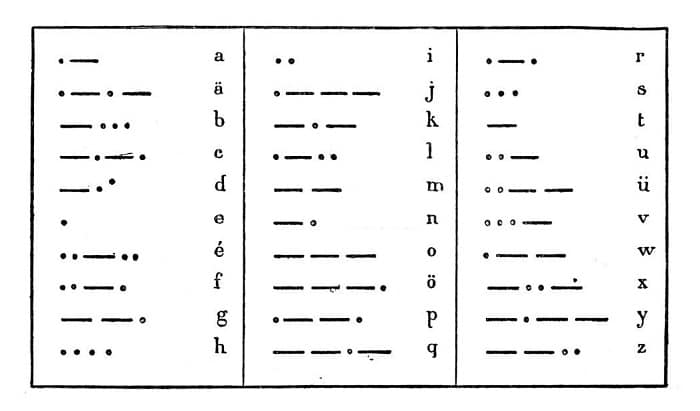Have you ever watched a movie or TV show depicting military life and heard someone say “copy that?” It’s a phrase so commonly associated with the armed forces that it feels like a universal language. But what does it truly mean, and does its usage extend beyond the confines of a military setting? Beyond the surface level, “copy that” represents a core principle of effective communication, one that transcends the boundaries of any particular group or profession.

Image: www.hacksdetective.com
This phrase, seemingly simple in its form, encapsulates a vital aspect of military communication: confirmation and understanding. It is a powerful tool for ensuring clarity, minimizing misunderstandings, and maintaining a smooth flow of operations in high-pressure environments. In this article, we’ll delve deeper into the origins and usage of “copy that,” exploring its significance not only within the military but also in everyday life, providing insight into its enduring relevance.
The History of “Copy That” in the Military
The phrase “copy that” has its roots in the development of military communication technology, especially during World War II. Before the advent of modern communication systems, military personnel relied on various methods, including signal flags, carrier pigeons, and even Morse code, to relay critical information. These methods were often cumbersome and prone to errors, especially amidst the chaos of battle.
The development of the radio, particularly the handheld transceiver, revolutionized military communication. These devices allowed for instant, reliable communication over long distances, facilitating quick decision-making and coordination. However, the introduction of radio communication brought its own set of challenges. The noise of battle, radio interference, and the limitations of early technology often resulted in garbled messages, leading to misunderstandings and potentially fatal consequences.
To mitigate these challenges, military personnel began using a standardized system of communication, known as “military phonetic alphabet.” Each letter of the alphabet was assigned a specific word, like “Alpha” for “A” and “Bravo” for “B,” ensuring clearer transmission over noisy radio channels. This system, combined with simple, concise phrases like “copy that,” became integral to effective communication in the military.
“Copy That”: Beyond the Battlefield
While “copy that” originated in a military context, its usage has long extended beyond the battlefield, finding its way into diverse fields and everyday language. The phrase is now commonly heard in aviation, law enforcement, and other professional settings where clear and concise communication is paramount.
This widespread adoption reflects the fundamental value of “copy that,” which transcends specific roles and environments. Its simplicity and directness make it easily adaptable to various situations, ensuring that the intended message is clearly understood.
The Power of “Copy That”
“Copy That” encompasses a powerful message: confirmation and understanding. When someone says “copy that,” they aren’t simply agreeing with an instruction; they are confirming that they have received, interpreted, and understood the message. It’s a form of “active listening,” demonstrating an engaged recipient rather than a passive observer.
This principle of confirmation is crucial in high-stakes situations. In a military context, a simple misunderstanding could have dire consequences. Imagine a soldier receiving an order to retreat but misinterpreting it as an order to advance. The results could be catastrophic. “Copy that” helps to mitigate these risks by creating a clear and deliberate exchange of information.

Image: www.thesoldiersproject.org
“Copy That” in Everyday Life
While it may seem like a specialized military term, “copy that” holds relevance in our everyday lives. Think about those instances when you need to relay information, whether it’s giving instructions to your children or coordinating a project with colleagues. The principle of confirmation remains essential.
In these everyday situations, you can apply the “copy that” concept to ensure clarity and minimize misunderstandings. When giving instructions, ask for confirmation: “Did you understand that?” When making a request, follow up with “got it?” These simple phrases, while not necessarily “copy that,” embody the same principle of active listening and confirmation.
The Evolution of Military Communication
In the years since World War II, military communication technology has advanced dramatically. Today, soldiers are equipped with sophisticated communication systems, allowing for secure, reliable, and high-bandwidth communication. However, even with these advancements, the fundamental principles of effective communication remain unchanged.
Clear, concise language, active listening, and confirmation remain paramount. While the exact phrase “copy that” might be less prevalent in modern warfare, the principle it represents continues to be vital. It serves as a powerful reminder to prioritize clear communication and avoid the pitfalls of misinterpretation, regardless of the technology employed.
Copy That Meaning Military
https://youtube.com/watch?v=h0eWTYjY16U
Conclusion
“Copy that” is more than just a military phrase; it represents a cornerstone of effective communication. Its origins lie in the need for clear and accurate information exchange in high-pressure environments, where even a simple misunderstanding could have dire consequences. Over time, its usage has transcended the military, finding its way into diverse fields and everyday language.
The enduring value of “copy that” lies in its simplicity and effectiveness. It underscores the importance of active listening, confirmation, and clear communication, principles that remain crucial for successful collaboration and interaction. Whether in a military operation or a simple conversation with a friend, remembering the power of “copy that” can significantly enhance your ability to understand and be understood.





